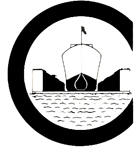Over 150 years of expertise in marine railways and floating dry docks
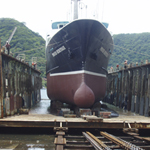 |
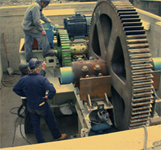 |
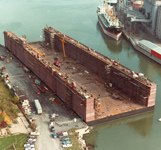 |
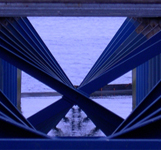 |
|
An
Introduction to Railway Dry Docks
and Transfer Systems
Part
4 - Transfer Systems
|
3. Side haul railway dry docks |
Transfer of vessels longitudinally or sideways from railway dry dock cradles has been accomplished since early in the century. Transfer of heavier ships has become popular in the last 30 to 40 years because of the needs created by prefabricated ship construction and assembly-line procedures and also the attractiveness of multiple docking and winter storage possibilities. The relatively low cost of transfer systems using one railway dry dock as the basic lifting and launching facility makes transfer very advantageous for large-scale developments. The cost varies greatly depending on arrangement, number of berths, and selectivity required, but in general one transfer berth including a transfer cradle will cost from 10% to 30% of the cost of the railway itself. Transfer of a ship on a horizontal plane applies the same principles of rolling and hauling used in railway dry docks, but with the difference that no component of gravity pull needs to be overcome - only friction forces. Thus the effort needed is only about 20% of that required to pull a ship up a 5% incline. The transfer system for a ship consists of a series of ways bearing on the ground or on pile foundations, which support one or more cars or cradles carrying the ship. Suitable blocking is provided between the ship and cradle to give headroom and clearance for working on the hull and to distribute the vessel weight as much as possible. The transfer cars are either fitted with wheels or travel on a free-roller system to keep friction low. For vessels up to about 400 tons, flanged wheels traveling on heavy crane rails can be used, but beyond this capacity the free roller system is preferable because of the heavy loads. Up to 1500 tons capacity, the choice between side and longitudinal transfer is largely a matter of convenience with respect to site conditions. For smaller vessels, the longitudinal system has proved very economical, especially if only a single spur track is used. Large railways using heavy multiple-chain hauling machines are not well adapted to end transfer because the transfer cradles would have to pass over the machinery itself. Also, at sites with little or no tide variation, track extensions are necessary, which usually preclude the use of longitudinal transfer. When full selectivity of storage spaces provided by two-directional transfer is required, then the cost of end transfer is about equal to the cost of side transfer. With two-directional transfer, the second direction of movement is accomplished at a lower level than the cradle deck level of the initial transfer. This permits the car for the one direction to be superposed on the car for other direction. Side transfer can be provided for an existing cradle where the ship's keel is on a declivity. This addition to an older railway dry dock is generally limited to only one or two berths. It has permitted shipyards with old World War II cradles to greatly increase their capacity at very modest cost. It has also enabled yards that formerly launched ships on greased ways to abandon the risky and costly launch in favor of the controlled lowering, with the added advantage of near horizontal construction.
|
Progress...the result of never being satisfied
Crandall
Dry Dock Engineers, Inc.
Established 1854
(888) DRYDOCK crandalldd@aol.com
